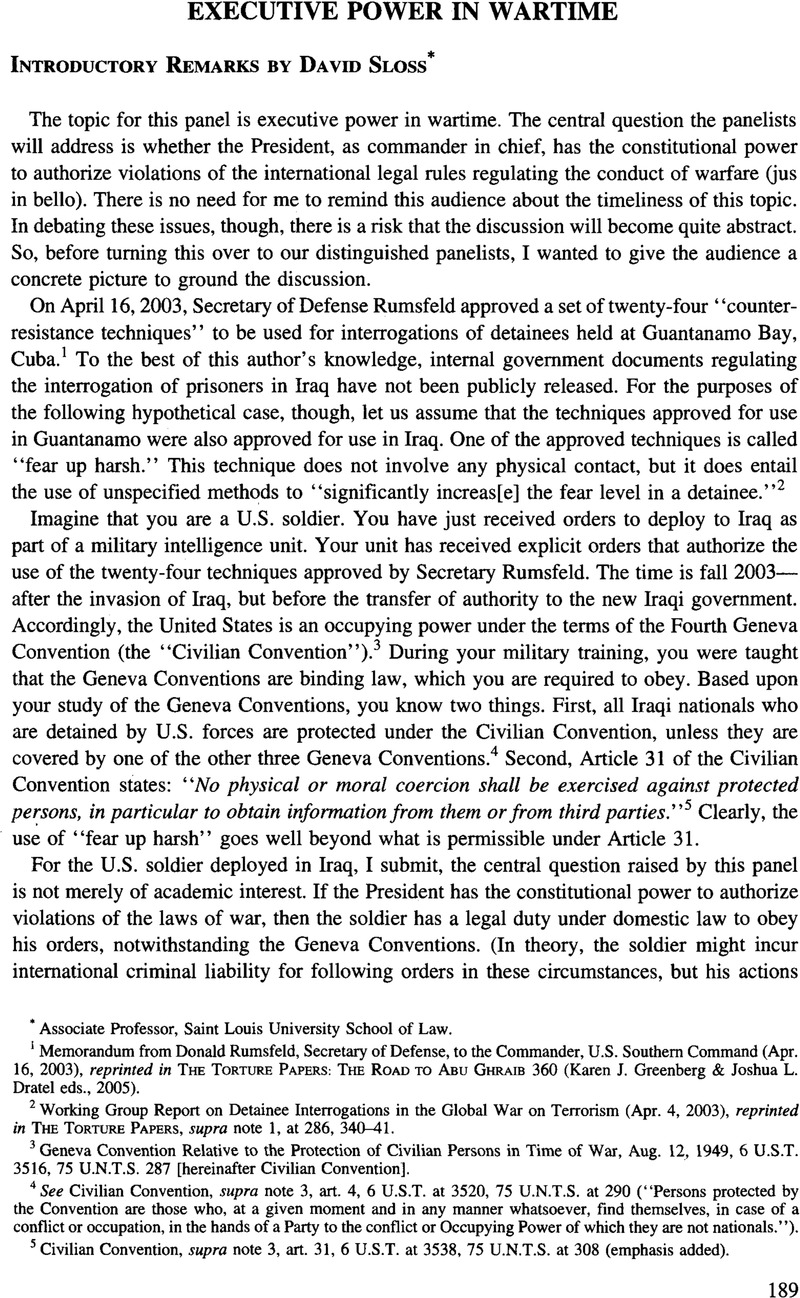No CrossRef data available.
Article contents
Introductory Remarks by David Sloss
Published online by Cambridge University Press: 28 February 2017
Abstract

- Type
- Executive Power in Wartime
- Information
- Copyright
- Copyright © The American Society of International Law 2005
References
1 Memorandum from Donald Rumsfeld, , Secretary of Defense, to the Commander,U.S. Southern Command(Apr.16, 2003)Google Scholar,reprinted in the Torture Papers : the Road to Abu Ghraib 360 (Karen J. Greenberg & Joshua L.Dratel eds., 2005).
2 Working Group Report on Detainee Interrogations in the Global War on Terrorism (Apr. 4, 2003), reprinted in the torture Papers, supra note 1, at 286, 340-41.
3 Geneva Convention Relative to the Protection of Civilian Persons in Time of War, Aug. 12, 1949, 6 U.S.T. 3516, 75 U.N.T.S. 287 [hereinafter Civilian Convention].
4 See Civilian Convention, supra note 3, art. 4, 6 U.S.T. at 3520, 75 U.N.T.S. at 290 (“ Persons protected by the Convention are those who, at a given moment and in any manner whatsoever, find themselves, in case of a conflict or occupation, in the hands of a Party to the conflict or Occupying Power of which they are not nationals.”).
5 Civilian Convention, supra note 3, art. 31, 6 U.S.T. at 3538, 75 U.N.T.S. at 308 (emphasis added).
6 U.S. Const, art. VI, cl. 2.


